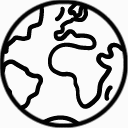

In 2016, the WWF H&M partnership started a strategic dialogue to discuss and manage a broader range of H&M Group’s and the textile industry’s sustainability challenges and possibilities. The main work areas were raw materials, innovations and policy and advocacy, which among other things lead to improved material routines for H&M Group and a policy push for stronger energy regulations in the EU.
Since 2011, WWF and H&M Group had been working on water stewardship to address the company’s dependency and impact on water. During this time, in parallel with the water work, a discussion on how to address other material sustainability challenges arose. In 2016, the strategic dialogue was introduced, together with a new climate stream, as a new working area within the partnership.
“There was a need to manage and discuss other challenges facing the fashion industry, such as raw material sourcing and circular solutions. We also wanted to have a space where we could try out new things”, said Katrina Johansson, Key Account Manager for the WWF H&M Group partnership at WWF.
The strategic dialogue’s main outcomes and working areas:
Several of the commonly used materials in the fashion industry require high amounts of freshwater, energy, pesticides and fertilizers, with negative impacts on people, biodiversity and nature. H&M Group has set the goal to only use 100 percent recycled or other sustainably sourced materials by 2030 at the latest. Through the strategic dialogue, WWF supported H&M in the work around sourcing more sustainable materials, including a project on sustainable rattan growing.
Innovations
The strategic dialogue also functioned as an incubator for strategic and innovative approaches, aiming to tackle industry challenges on water and climate in pioneering ways. One example is a landscape finance programme in Cambodia, designed to find new ways to connect carbon sinks and resilience to the textile supply chain, while developing sustainable biomass solutions for the local textile sector. This project showed the need for solutions to fight illegal deforestation and the partnership is, together with partners in Cambodia, currently developing a tool for this purpose (expected to be launched in late 2021).
Another project initiated in the stream were science-based targets for water , still a highly topical initiative in the water stream. A third initiative was the one to set a cross-industry definition of what climate positive for a company means.
Policy and advocacy
The third part of the strategic dialogue aimed to bring change through policy and advocacy. Amongst other things, during 2017 and 2018, WWF and H&M Group advocated together with other companies to encourage the European Parliament to vote for more renewable energy, more energy efficiency and a climate neutral EU by 2050. H&M also actively contributed to the Business for Nature Coalition throughout 2019 and 2020 as part of the Strategic Advisory Group of companies. Through this coalition business leaders demonstrated their support for a strong global agreement under the UN Convention on Biodiversity. In 2020, H&M Group also took part of a working group that provided input to the Taskforce for Nature-related Financial Disclosure (TNFD) platform.
Shifting focus to biodiversity
In 2020, the partnership decided to replace the strategic dialogue with a new stream focusing on biodiversity. Several projects within the dialogue were already connected to the topic. It was also a natural step as biodiversity, besides being at the core of WWF’s mission, is strongly affected by the textile industry; processes such as raw material production and sourcing, garment design, transportation and customer use are all related to biodiversity and nature. For H&M Group, raw material sourcing is a central area and also where the company has its largest impact.
Through this ambition H&M Group is taking a holistic approach to manage its impact and dependence on biodiversity.
Milestones & Results (strategic dialogue)
Raw materials
- Improving H&M Group procedures when sourcing selected raw materials, such as bamboo and rattan.
- Strengthening H&M Group’s forest raw material policy, including increasing the use of FSC certified products.
- Supporting a pilot project for more sustainable rattan production in Indonesia. Rattan growing keeps forests standing while supporting biodiversity and providing business opportunities to the local community.
- The above work supported H&M Group’s goal to use 100 percent recycled, or other sustainably sourced materials, by 2030 at the latest.
Innovation
- Taking first steps to develop a definition of climate positive together with IKEA. The purpose is to bring together brands who want a credible, scientific and globally accepted way of becoming a ‘climate positive’ company
- Exploring new ways of setting water targets. The work to set targets adapted to context, later on to be developed to science based targets, was formed here.
Policy & Advocacy
- During 2017 and 2018, WWF and H&M Group advocated together with other companies, for stronger regulations on energy efficiency and renewable energy in the EU.
- Supporting the development of H&M Group’s biodiversity ambition, released in September 2020, taking a holistic approach to manage the Group’s impact and dependency on biodiversity. One central part of the ambition involves policy and advocacy to support biodiversity.
- Throughout 2019 and 2020, H&M Group actively contributed to the Business for Nature Coalition and its work on international biodiversity policy as part of the Strategic Advisory Group of companies.
